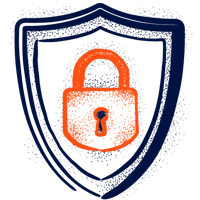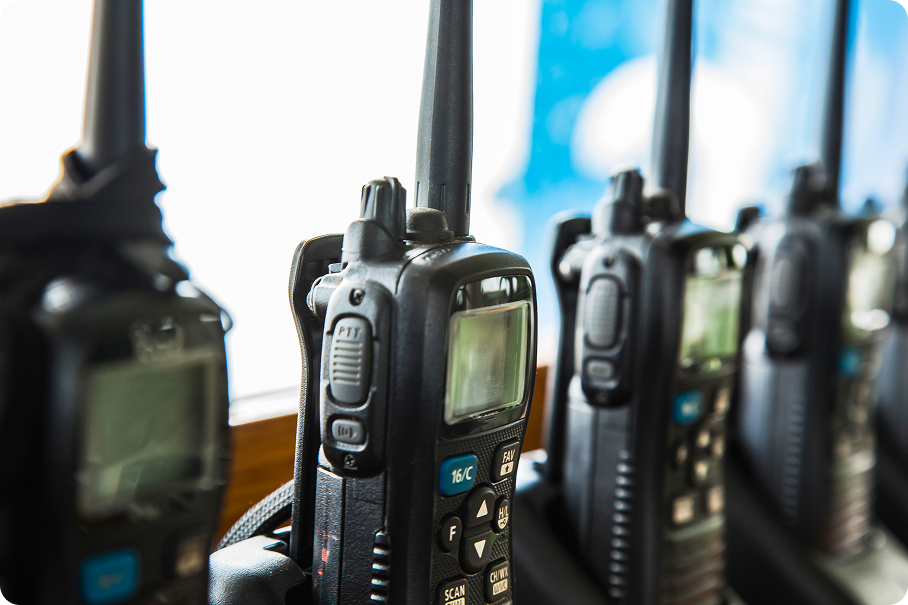In 2011, Washington, DC’s Chief of Police testified before the City Council that criminals were using scanners and even smartphone apps to monitor police radio traffic. Carjackers and burglars were listening in on officers’ plans and staying one step ahead. The department responded by pushing for full encryption of its radios.
If this can happen to law enforcement, imagine how vulnerable a retailer’s loss-prevention team or a hospital’s security staff might be when they rely on unencrypted radios. The lesson is clear: “encrypted” radios aren’t all the same, and what’s written on the spec sheet doesn’t always reflect what happens in practice.
Radios in the wild: Four levels of security
-
Business Grade ($400–$700)
Think MOTOTRBO R2 or XPR 3500e. These are popular in retail and warehousing. They support “Basic Privacy” or Motorola ADP (40-bit) encryption. That’s enough to block casual listeners—but not someone motivated, like shoplifters with a scanner. And unless you configure it, encryption isn’t enabled out of the box. -
Industrial & First Responder ($700–$1,500)
The XPR 7550e and XPR 7580e radios are capable of supporting AES encryption (including AES-256 in some regions) and when properly enabled this offers very strong protection. However, in the US market AES support for these models is not standard — it often requires a separate entitlement and may be subject to special approval. Regardless of feature support, strong key management (regular rotation, secure loading, decommissioning of lost/stolen radios) remains essential for maintaining real security. -
Mission Critical ($1,500–$4,000+)
The APX 6000 and APX 7000 are widely used in public safety. They offer AES-256, FIPS validation, and Over-the-Air Rekeying (OTAR). But even here, not every talk group is encrypted; interoperability often requires clear channels. -
Special Contract / Military ($5,000–$7,000+)
The APX 8500, a multiband mobile, represents the top tier. With government-grade modules and secure key loaders, encryption is the default. Still, even the strongest systems can be undermined by poor key handling or lost devices.
Why encryption isn't always default
Even radios capable of encryption often ship with it turned off. Reasons include:
- Mixed fleets: not every device supports encryption.
- Licensing costs: AES sometimes requires extra fees.
- Operational convenience: clear channels simplify coordination with outside teams.
- Awareness: many users simply don't realize encryption requires activation.
That gap—between capability and practice—is exactly how criminals in DC were able to listen in. And it’s how frontline businesses can inadvertently expose sensitive operations.
Best practices: Making radios truly secure
If you rely on radios, here's how to close the gap:
- Go with AES-256 whenever possible—it's the trusted standard.
- Rotate keys at least every 90 days.
- Use OTAR if available, to simplify updates.
- Deactivate lost radios immediately.
- Educate staff—encryption is only effective if people use it properly
The takeaway
From DC police scanners to retail back rooms, the risks of open communications are real. Radios that claim encryption don’t always deliver security in practice.
The smart move: verify what encryption really means for your devices, and don’t assume it’s turned on.

Appendix: How Zello compares on encryption
Motorola radios make encryption possible. Zello makes it inevitable.
- Always On: AES-256 encryption is baked in—no extra licenses, no toggles.
- Cloud-Managed Keys: Automatic distribution and refresh remove human error.
- Device Flexibility: From iPhones to rugged Androids, all devices get the same security.
- Centralized Admin: IT can enforce policies and deactivate accounts remotely.
With Zello, security is never optional. It’s the default. Frontline teams deserve security without complexity; that’s why every push-to-talk conversation is encrypted, every time.
Curious how Zello protects frontline teams without the hassle of radio key management? Talk to us.

